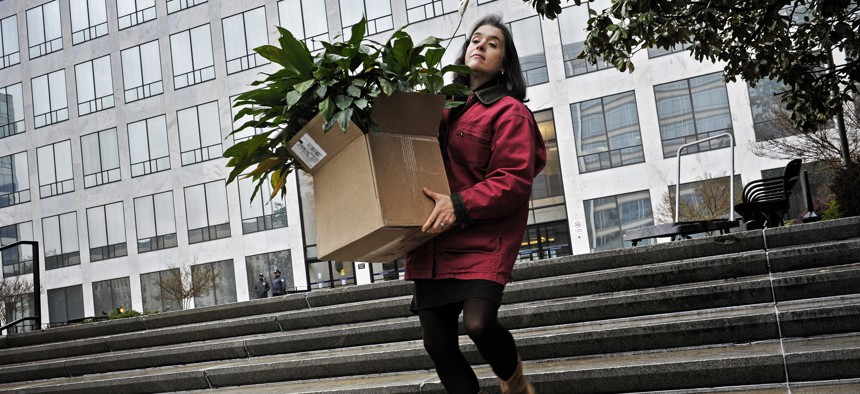That time the vast majority of federal employees worked outside Washington
That time is now.
The latest in an intermittent series looking back at groundbreaking, newsmaking, appalling and amusing events in government history.
Once upon a time, vast portions of the federal workforce lived and worked outside of the Washington, D.C., area. In many cases, they toiled far away from the nerve center of government—or the swamp, depending on your point of view.
That time is now.
There’s a persistent misperception that federal employees are concentrated in the D.C. metro area. But from the moment of its creation, the government has been highly decentralized. Many of the earliest federal workers, including postmasters, customs officers and lighthouse supervisors, lived and worked in far-flung regions, because they had to be near the citizens they served.
“They were geographically distributed but administratively decentralized,” writes Peter Kastor, professor of history at Washington University. In 1824, the State Department had operations scattered around the globe, but had only 13 employees in Washington. The Treasury Department, with the largest central office, had 152 employees.
Since then, times haven’t changed as much as a lot of people think. As of 2017, about 280,000 federal employees worked at agencies in the Washington metro area. That may sound like a big number, but not when you consider the size of the total federal workforce: about 2 million. (And lest you think that figure is a sign of an out-of-control bureaucracy, it hasn’t changed significantly in more than 50 years.)
So about 85% of federal employees already work in swamp-free conditions. (Except, presumably, those whose work requires them to toil in actual swamps.) That does not stop politicians from promising to move feds and the offices they work in away from the stench of Washington—even as they campaign to occupy political posts in the city themselves.
Donald Trump has promised to move 100,000 federal jobs out of Washington in his quest to become the next Grover Cleveland. It’s part of a broader plan to “to dismantle the deep state and reclaim our democracy from Washington corruption.”
You might ask how Trump did with his first shot at swamp-draining. In 2019, he moved the Bureau of Land Management’s headquarters from Washington to Grand Junction, Colo. The shift involved forcing 328 employees out of the nation’s capital. Just 41 agreed to make the cross-country move. President Biden moved the BLM headquarters back to D.C. in 2021.
Trump also shifted the Agriculture Department’s Economic Research Service and National Institute of Food and Agriculture from Washington to Kansas City, Mo. In that chaotic process, both organizations lost about half of their staff. That, it turned out, was not viewed within the administration as a problem, but rather a benefit.
In 2019, then-White House Chief of Staff Mick Mulvaney said, “simply saying to people, ‘You know what, we’re going to take you outside the bubble, outside the Beltway, outside this liberal haven, and move you out into the real part of the country,’ and they quit. What a wonderful way to streamline government.”
This time around, Trump is placing more emphasis on taking direct control of federal agencies and firing “rogue bureaucrats.“ If that’s the case, he may end up wanting to leave employees in Washington where he can keep an eye on them. Other Republicans, picking up on Trump’s corruption theme, are targeting agency headquarters as a means of retribution for perceived swampiness. When Rep. Bill Johnson, R-Ohio, introduced a relocation bill last year, he called it the Strategic Withdrawal of Agencies for Meaningful Placement Act. (Get it?) House Speaker Kevin McCarthy, R-Calif., recently floated the idea of doing away with the FBI headquarters entirely, leaving it with decentralized offices spread across the country.
Others on both the right and the left now defend the idea of shifting headquarters operations to new locales as a form of economic development. Indeed, relocation has become a new brand of pork-barrel politics. When Sens. Josh Hawley, R-Mo., and Marsha Blackburn, R-Tenn., introduced their Helping Infrastructure Restore the Economy Act last year, it turned out that two of the states eligible for agency relocations were Missouri and Tennessee.
GOP lawmakers make a forceful case for dispersing the federal workforce—and as the word “infrastructure” in Hawley and Blackburn’s bill indicates, constructing new office buildings for them. But ironically, they’re dead-set against one thing that could lead some federal employees to voluntarily vacate the Washington bubble for the hinterlands: expanded telework.








